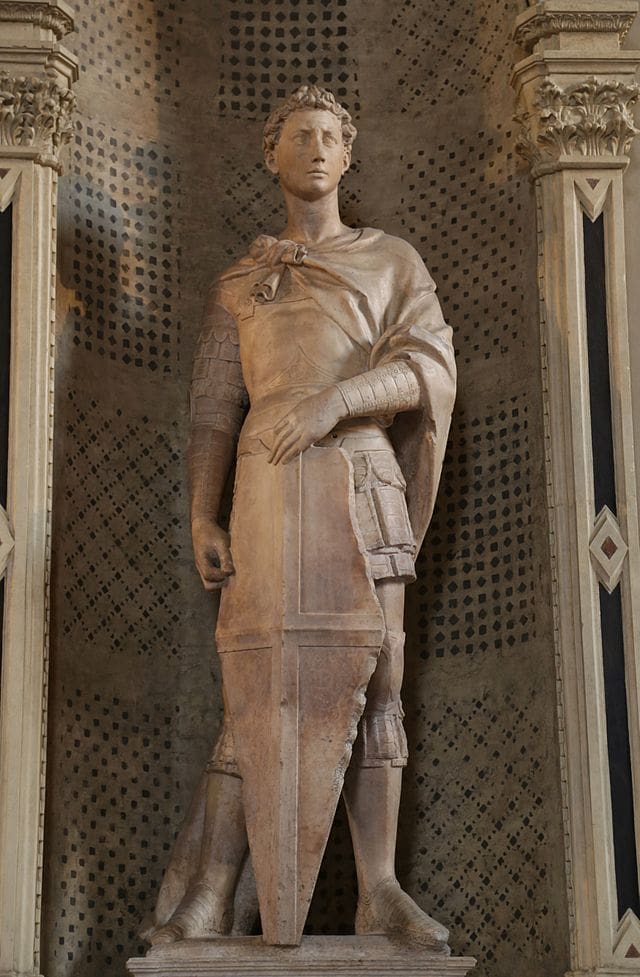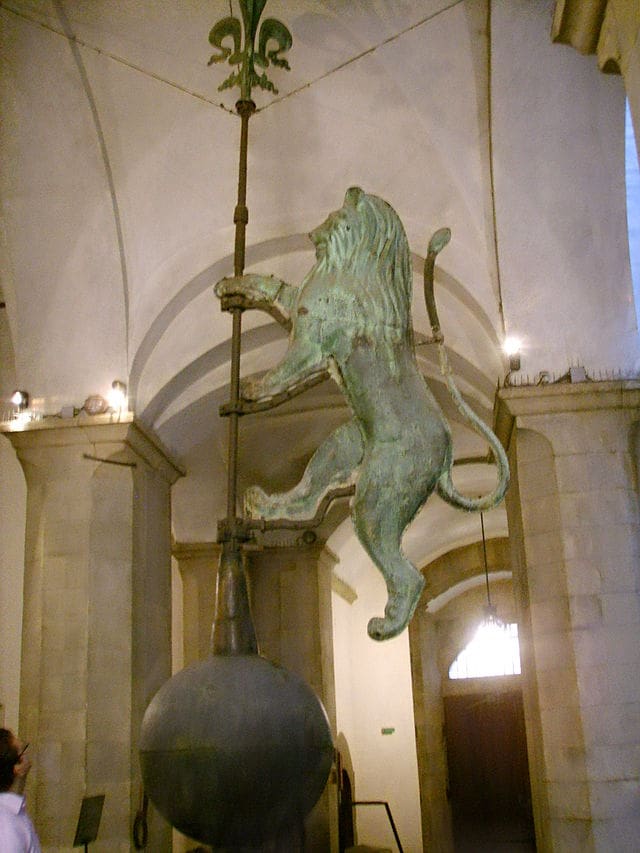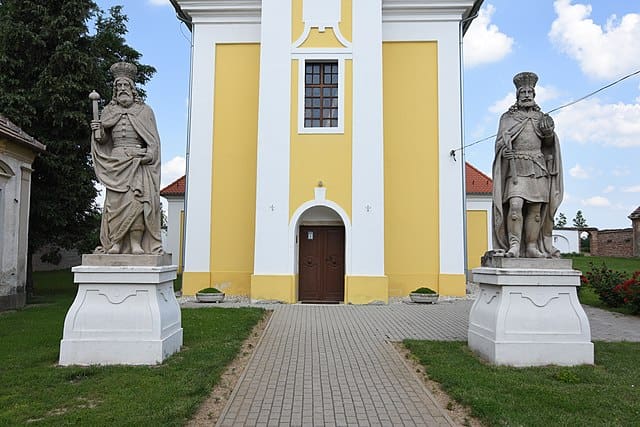20 Most Famous Works By Donatello
Donatello, a name synonymous with artistic genius, stands tall among the giants of the Italian Renaissance. His sculptures, crafted in bronze and marble with breathtaking skill and emotional depth, continue to captivate audiences centuries after their creation. Each masterpiece, from the iconic David to the enigmatic Zuccone, is a testament to Donatello’s unwavering dedication to pushing the boundaries of artistic expression.
In this article I delve into 20 of Donatello’s most celebrated works, offering a glimpse into the sculptor’s extraordinary talent and the profound impact he had on the course of art history. I’ll begin with the groundbreaking David, the first large-scale nude sculpture since antiquity, that redefined the depiction of the biblical hero with its youthful confidence posture. Join me on this journey through Donatello’s artistic universe, where every detail whispers a story and every masterpiece leaves an indelible mark on the soul.
1. David (1408-1409)
Donatello’s bronze statue of David is a seminal work of art, representing a breakthrough in Renaissance sculpture. Commissioned for the Medici family, it is renowned as the first freestanding, life-sized nude sculpture since antiquity.
Donatello diverged from tradition by portraying David not as a triumphant hero with Goliath’s head but as a young, victorious warrior. The sculpture exudes a sense of youthful confidence and beauty, showcasing Donatello’s mastery in capturing the human form and his pioneering approach to classical themes.
2. St. Mark (1411-1413)

Donatello, CC BY-SA 3.0, via Wikimedia Commons
Commissioned for the niche at Orsanmichele in Florence, Donatello’s St. Mark is a superb example of his early Renaissance craftsmanship. Carved from marble, the statue demonstrates Donatello’s commitment to realism and attention to anatomical accuracy.
St. Mark is depicted in the act of writing, capturing a moment of intellectual contemplation and divine inspiration. The drapery and posture reflect a departure from the rigidity of medieval art, introducing a more naturalistic and dynamic portrayal of the human form.
3. Prophet Habakkuk (1423-1425)
Part of Donatello’s contributions to the Florence Cathedral, the statue of Prophet Habakkuk is a compelling representation of spiritual intensity. Carved in marble, the prophet is depicted in a state of deep contemplation, capturing the divine inspiration characteristic of biblical figures.
The sculpture’s realistic portrayal and emotional depth set it apart, showcasing Donatello’s ability to infuse spirituality into his works. The intricate detailing of the drapery and the intricate folds further emphasize the artist’s mastery in conveying a sense of movement and life.
4. St. George (1415-1417)

Donatello, CC BY-SA 3.0, via Wikimedia Commons
St. George, sculpted by Donatello for the guild of armourers and swordmakers in Orsanmichele, is a testament to the sculptor’s evolving skill. The marble statue showcases St. George in a dynamic pose, triumphantly standing over the defeated dragon.
Donatello’s meticulous attention to detail is evident in the rendering of armour and the expression on St. George’s face. This work reflects the Renaissance fascination with classical themes, emphasizing valour and virtue.
5. The Feast of Herod (c. 1423-1427)
Donatello’s relief panel depicting The Feast of Herod is a dramatic portrayal of the biblical narrative. The scene captures the moment of Salome’s dance, which leads to the beheading of John the Baptist. The composition is marked by dynamic movement, with figures engaged in various activities. Donatello’s innovative use of perspective and his ability to convey intense emotions make this relief a masterpiece.
The interplay of light and shadow, along with the intricate details of the figures, showcases Donatello’s technical prowess and his skill in storytelling through sculpture. The Feast of Herod stands as a testament to Donatello’s ability to bring biblical narratives to life with depth and emotion.
6. Madonna of the Clouds (1425)

MenkinAlRire, CC BY-SA 4.0, via Wikimedia Commons
Donatello’s Madonna of the Clouds is a magnificent marble relief that exemplifies his ability to infuse tenderness and grace into religious subjects. Commissioned for the Campanile of Florence Cathedral, the work captures the Virgin Mary holding the infant Jesus, surrounded by hovering angels on clouds.
The composition conveys a sense of ethereal beauty, with Mary’s flowing robes and the cherubic figures creating a harmonious and celestial atmosphere. Donatello’s attention to drapery and the delicate expressions on the faces of Mary and the angels showcase his mastery in conveying a sense of divine serenity and maternal affection.
7. Zuccone (1423-1425)
The Zuccone, one of the statues in the Florence Cathedral, stands as a testament to Donatello’s ability to breathe life into stone. Carved from marble, this prophet exudes a sense of animated contemplation. Zuccone, meaning pumpkin head in Italian, is named after the pronounced shape of the figure’s head.
The intricate detailing of the facial features, the flowing beard, and the dynamic posture mark a departure from conventional representations of prophets. Donatello’s Zuccone represents a pivotal moment in Renaissance sculpture, breaking away from the static and rigid depictions of the past and embracing a more naturalistic and expressive form.
8. The Annunciation (c. 1432-1433)

MenkinAlRire, CC BY-SA 4.0, via Wikimedia Commons
The Annunciation, a relief panel created for the Cavalcanti altar in Santa Croce, portrays the angel Gabriel’s announcement to the Virgin Mary. This work is a testament to Donatello’s ability to convey narrative drama and emotion in stone. The composition captures the moment of revelation with Mary gracefully receiving the news, her body language conveying surprise and humility.
Donatello’s meticulous attention to detail, seen in the intricate drapery and the fluidity of the angel’s wings, enhances the overall dynamism of the scene. The Annunciation showcases Donatello’s artistic innovation, combining classical elements with a keen sensitivity to human expression.
9. St. John the Evangelist (c. 1409-1411)
St. John the Evangelist, part of the Duomo in Florence, represents Donatello’s early foray into naturalism. The marble statue portrays the saint with a sense of youthful vigour, emphasizing his intellectual contemplation. The drapery cascading down the figure’s body reveals Donatello’s attention to the realistic representation of fabric.
Saint John’s pose and facial expression convey a depth of introspection and scholarly focus, moving away from the stylized depictions of saints prevalent in medieval art. This sculpture marks a significant step in Donatello’s artistic evolution, foreshadowing the realism and individualism that would characterize the Renaissance.
10. Marzocco (1419-1420)

I, Sailko, CC BY-SA 3.0, via Wikimedia Commons
The Marzocco, a heraldic lion sculpture, is emblematic of Florence and was commissioned for the Palazzo Vecchio. Symbolizing the city’s strength and resilience, the lion stands atop a shield bearing the fleur-de-lis. Donatello’s portrayal captures the majestic power of the lion, its mane flowing dynamically and its posture conveying a sense of regality.
The Marzocco became an enduring symbol of Florence, embodying the city’s identity and pride. Donatello’s ability to infuse life into stone is evident in the commanding presence of this heraldic symbol, reflecting his mastery in sculpting both human forms and powerful, symbolic representations.
11. The Crucifix (c. 1412-1415)
Donatello’s Crucifix, carved from wood, is a poignant representation of the suffering Christ. Created during his early years, this sculpture stands as a testament to Donatello’s innovative approach to religious art. The figure of Christ exhibits a profound sense of human vulnerability, departing from the conventional idealized depictions of the time.
The expressive facial features and the detailed rendering of Christ’s anatomy convey a deep emotional resonance. Donatello’s Crucifix, with its realism and empathy, foreshadows the artistic direction of the Renaissance, departing from medieval conventions and ushering in a new era of heightened emotional engagement with religious subjects.
12. Equestrian Monument of Gattamelata (1447-1450)

I, Sailko, CC BY-SA 3.0, via Wikimedia Commons
Commissioned for the Venetian condottiero Erasmo da Narni, commonly known as Gattamelata, Donatello’s Equestrian Monument is a landmark in Renaissance sculpture. Cast in bronze, this work is celebrated for its dynamic composition and technical prowess. The horse and rider are captured in a moment of motion, a departure from the static equestrian statues of the past.
Gattamelata’s commanding presence on horseback reflects the military strength and authority of the condottiero. This sculpture marks Donatello’s mastery of the challenging medium of bronze and his ability to convey both the individual character of the subject and the broader ideals of the Renaissance.
13. Cantoria (1433-1439)
The Cantoria, also known as the Singing Gallery, is a marble relief created for the Florence Cathedral. Commissioned alongside Luca della Robbia, this work adorns the interior of the cathedral with a joyful celebration of song and dance. The relief panels depict choristers engaged in lively musical performances, their bodies exuding a sense of rhythm and movement.
Donatello’s contribution to the Cantoria showcases his ability to convey a sense of joy and festivity through sculpture. The intricate detailing of the figures and the overall composition contribute to the dynamic and harmonious atmosphere of the Singing Gallery, emphasizing the Renaissance spirit’s celebration of human expression and creativity.
14. The Magdalene Penitent (c. 1453-1455)

Nxr-at, CC BY-SA 4.0, via Wikimedia Commons
The Magdalene Penitent, carved in wood, is a poignant portrayal of Mary Magdalene in a state of repentance. Donatello’s sculpture captures the essence of spiritual reflection and sorrow, depicting the Magdalene with downcast eyes and an expression of deep contemplation.
The detailed rendering of her flowing hair and the drapery clinging to her emaciated form adds to the emotional impact of the work. The Magdalene Penitent stands as a testament to Donatello’s ability to convey complex emotional states through sculpture, inviting viewers to empathize with Magdalene’s journey of repentance and devotion.
15. St. Mary Magdalene (c. 1455-1456)
Another portrayal of Mary Magdalene by Donatello, this wooden sculpture showcases a different interpretation of the biblical figure. In contrast to the Magdalene Penitent, this work emphasizes the beauty and grace of Mary Magdalene. The intricate detailing of her flowing hair, the cascading drapery, and the delicate features of her face contribute to a sense of ethereal elegance.
Donatello’s St. Mary Magdalene, while maintaining an air of penance, introduces a softer and more contemplative depiction of the biblical character. This duality in his representations of Mary Magdalene showcases Donatello’s versatility and his ability to convey diverse aspects of human experience through his art.
16. Pazzi Madonna (c. 1420-1422)

MenkinAlRire, CC BY-SA 4.0, via Wikimedia Commons
The Pazzi Madonna is a marble relief commissioned by the Pazzi family for the Pazzi Chapel in Florence. Created during the early 15th century, it represents the Virgin Mary with the infant Jesus. The composition is marked by the Madonna’s gentle embrace of the Child and their intimate connection.
Donatello’s attention to detail is evident in the delicate features of both figures, and the drapery reveals a sense of naturalism. This work is celebrated for its elegance and the portrayal of maternal tenderness, emphasizing Donatello’s ability to infuse religious subjects with humanity and grace.
17. St. Louis of Toulouse (c. 1423)
Commissioned for the Martelli Chapel in Florence, the statue of St. Louis of Toulouse is a testament to Donatello’s evolving style during the early 15th century. The marble sculpture portrays the saint in a thoughtful and contemplative pose. St. Louis is depicted holding a book, reflecting his scholarly pursuits.
Donatello’s attention to the detailed rendering of the saint’s garments and the expressive quality of the face showcases his mastery in conveying both the spiritual and intellectual aspects of the subject. The statue exemplifies Donatello’s ability to imbue religious figures with individuality and introspection.
18. David (Marble) (1440-1460)

Donatello, CC BY-SA 4.0, via Wikimedia Commons
Distinct from his earlier bronze David, Donatello’s marble rendition of the biblical hero is a testament to his evolving artistic style. Commissioned by the Medici family, this David showcases a more mature and introspective portrayal. The youthful figure stands with a calm and contemplative expression, his features exuding a sense of confidence and determination.
The intricate detailing of David’s curly hair and the rendering of his anatomical features highlight Donatello’s mastery of capturing naturalism. This marble David, with its harmonious proportions and refined elegance, represents a pinnacle of Renaissance sculpture, showcasing Donatello’s ability to infuse classical subjects with emotional depth.
19. David and Goliath (c. 1440-1460)
In the relief panel David and Goliath, Donatello depicts the iconic biblical confrontation between the shepherd David and the giant Goliath. The composition is marked by dynamic movement, with David in the act of slinging the stone that falls Goliath.
The contrasting physiques of the two figures emphasize the triumph of the underdog, and Goliath’s defeated posture adds a dramatic element to the scene. Donatello’s attention to detail, seen in the intricate depiction of armour and the expressive faces of both figures, contributes to the narrative intensity. This relief panel not only showcases Donatello’s skill in storytelling but also reflects the Renaissance fascination with classical themes and the celebration of human achievement.
20. Beardless Prophet (c. 1416-1418)

Donatello, CC BY-SA 4.0, via Wikimedia Commons
The Beardless Prophet, a marble statue created for the Florence Cathedral, is a representation of a youthful biblical figure. Standing in a contrapposto pose, the prophet exudes a sense of naturalism and grace. The absence of a beard distinguishes this figure from traditional depictions of prophets, showcasing Donatello’s departure from conventional norms.
The drapery, flowing around the figure, emphasizes a sense of movement and contributes to the overall dynamism of the sculpture. The Beardless Prophet reflects Donatello’s early exploration of naturalistic elements and his ability to convey a sense of individuality in religious subjects. This work marks a significant step in the transition from medieval to Renaissance aesthetics in sculpture.
These are just a taste of Donatello’s prolific and groundbreaking works. Each of his works reveals his exceptional technical skill, profound understanding of human anatomy and emotion, and unwavering dedication to pushing the boundaries of artistic expression. His influence on generations of sculptors is undeniable, solidifying his place as one of the most revered artists of the Renaissance.
Planning a trip to Paris ? Get ready !
These are Amazon’s best-selling travel products that you may need for coming to Paris.
Bookstore
- The best travel book : Rick Steves – Paris 2023 – Learn more here
- Fodor’s Paris 2024 – Learn more here
Travel Gear
- Venture Pal Lightweight Backpack – Learn more here
- Samsonite Winfield 2 28″ Luggage – Learn more here
- Swig Savvy’s Stainless Steel Insulated Water Bottle – Learn more here
Check Amazon’s best-seller list for the most popular travel accessories. We sometimes read this list just to find out what new travel products people are buying.









